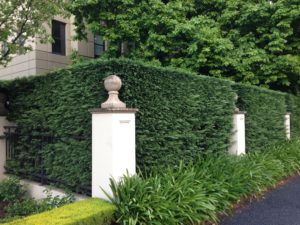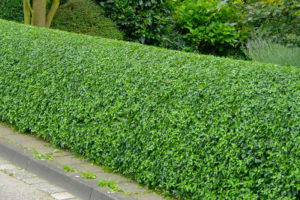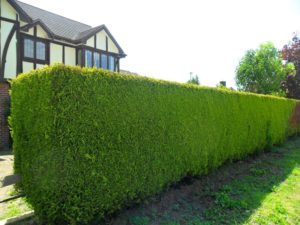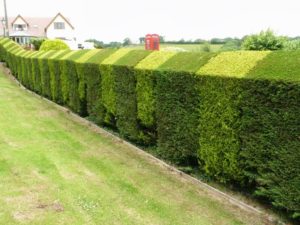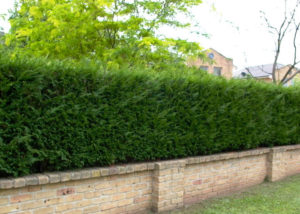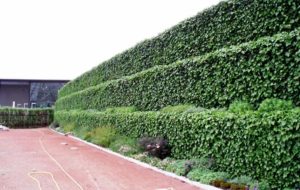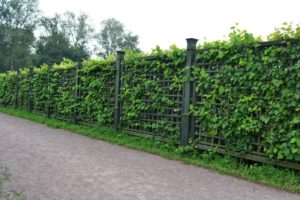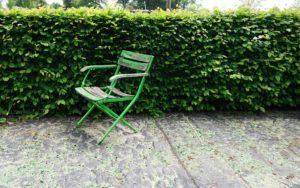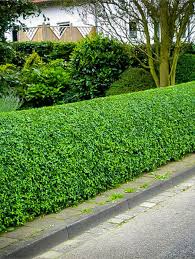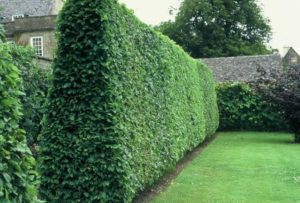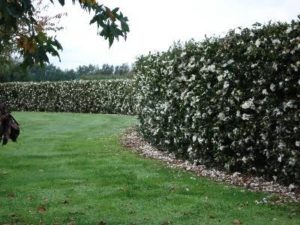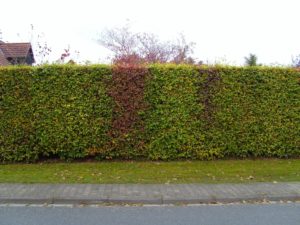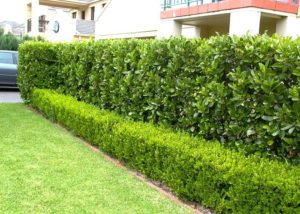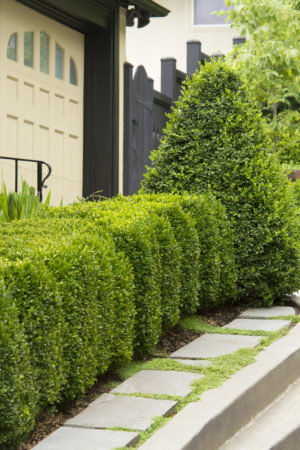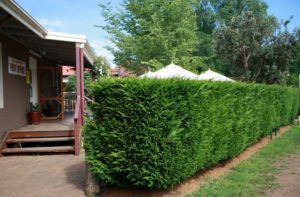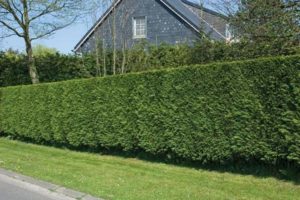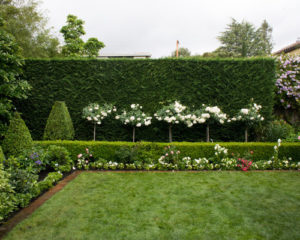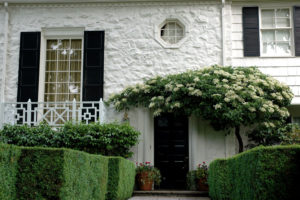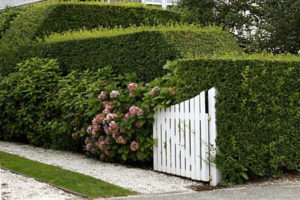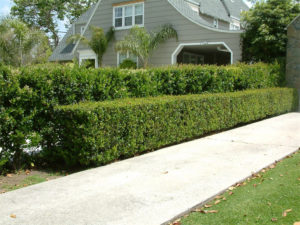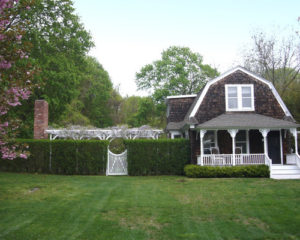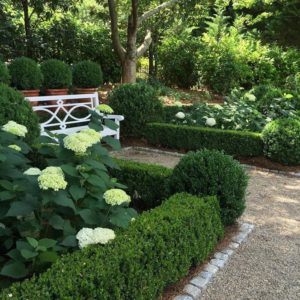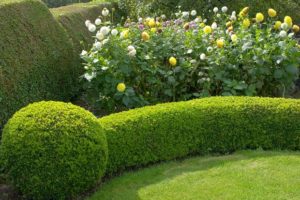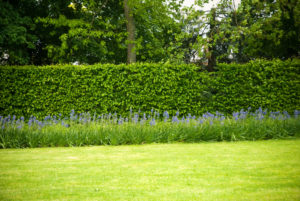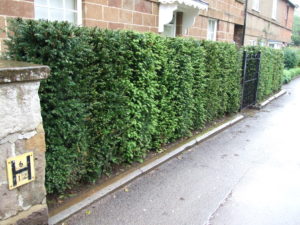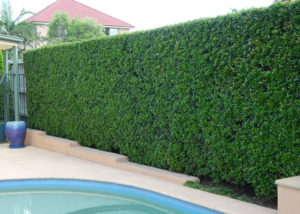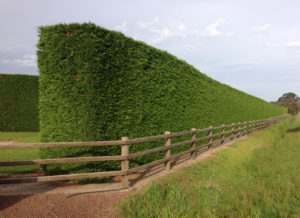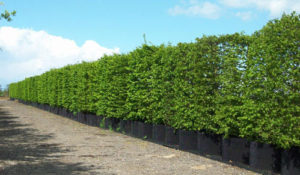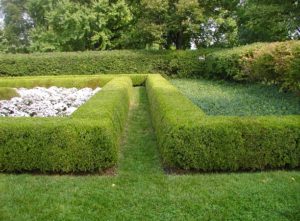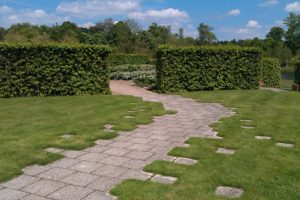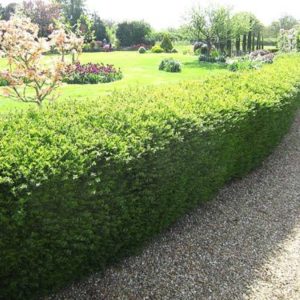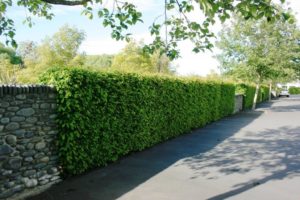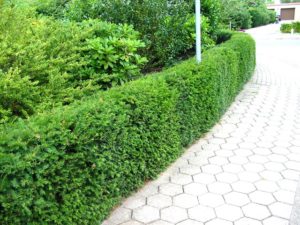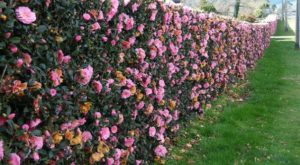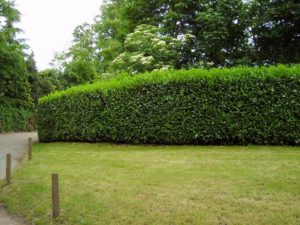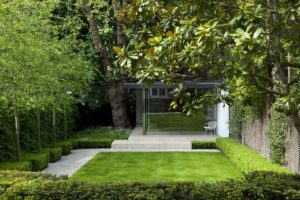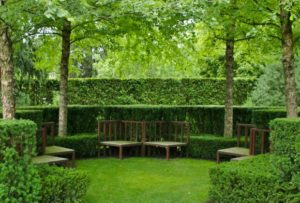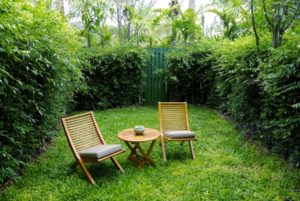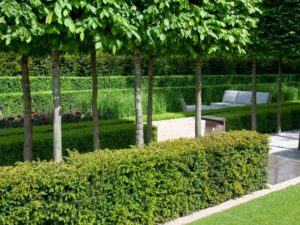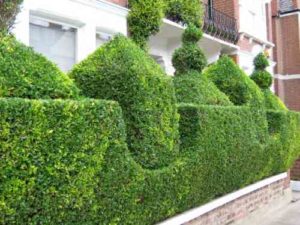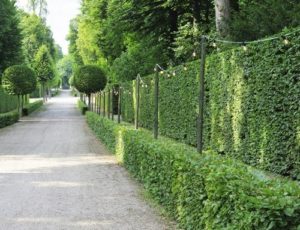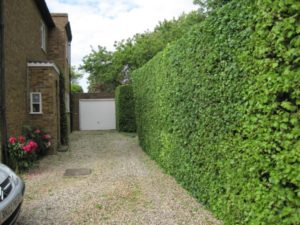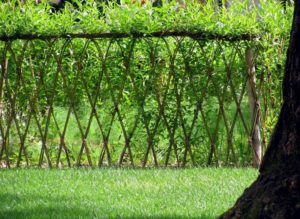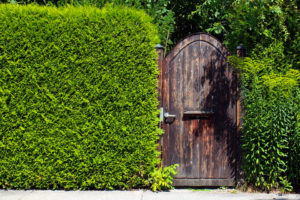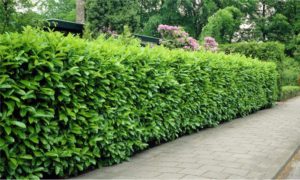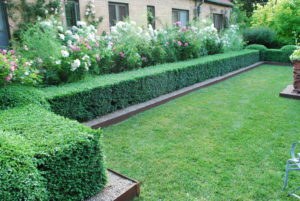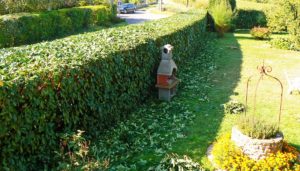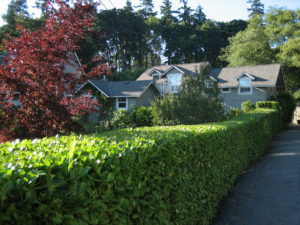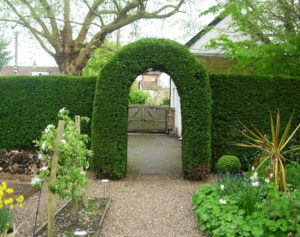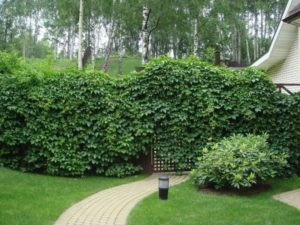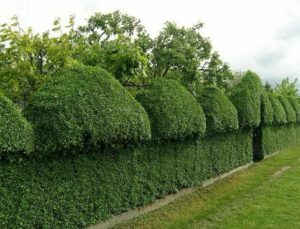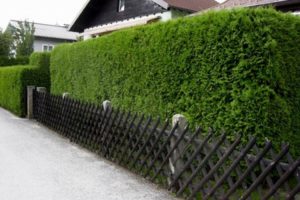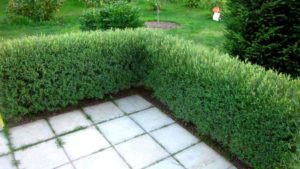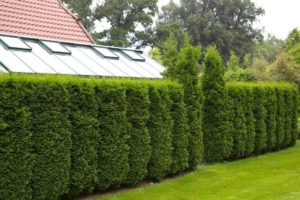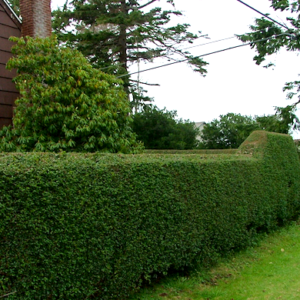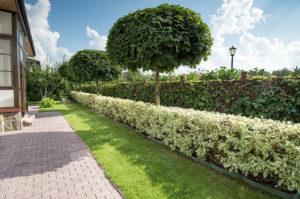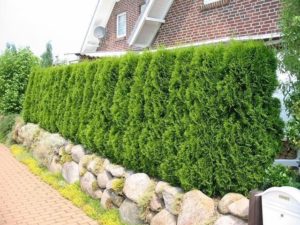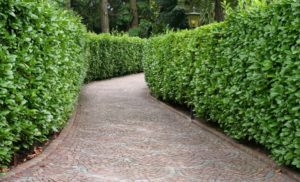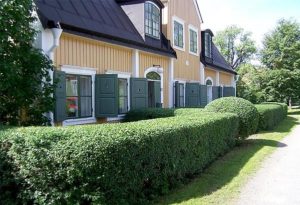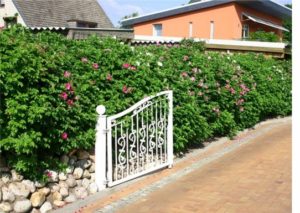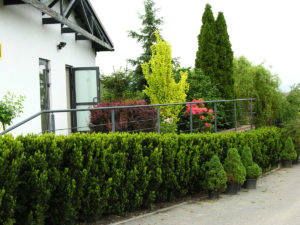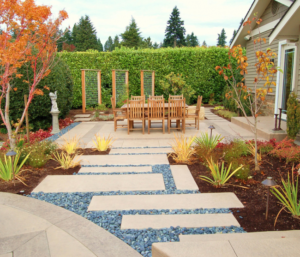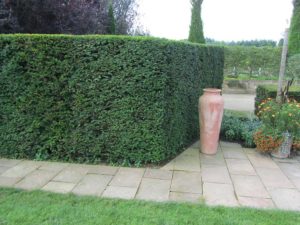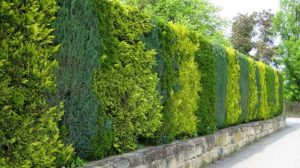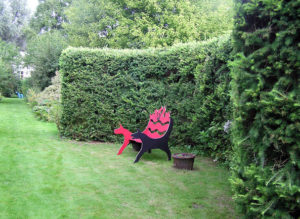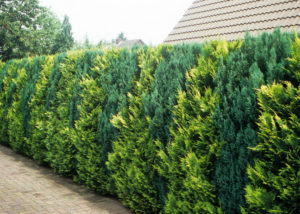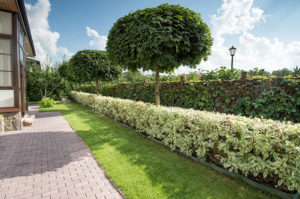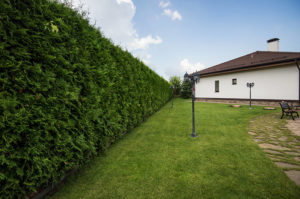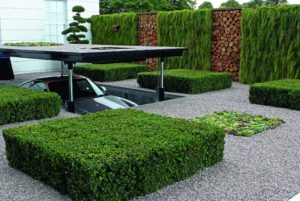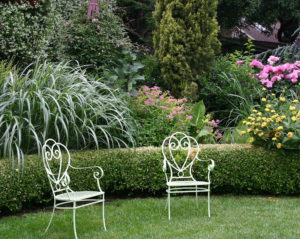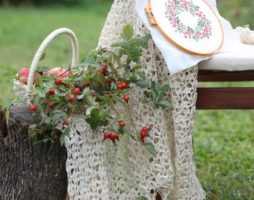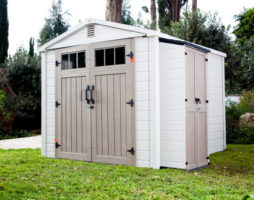All owners of suburban areas are faced with the issue of their fencing. They have to choose which is better: a dead stone or a living fence.
Hedge Benefits
A green fence enclosing your territory will be an excellent barrier to dust, wind and noise, as well as uninvited guests and annoying neighbors.
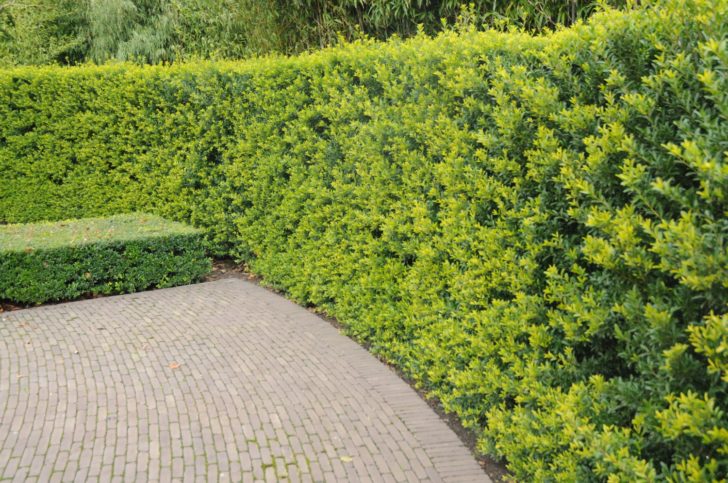
The hedge will be an excellent barrier to dust
A hedge is very relevant in the country. It will not be necessary to invest as much money in its creation as in the construction of a monumental fence. The best solution in a country case would be a free-growing fencing planting, because it does not require such reverent care. In particular, you do not have to spend time trimming the hedge to maintain the correct geometry of its shapes.

Fencing planting does not need regular trimming
Separately, it should be said about the hedge of rose bushes, which can not only decorate the facade of the house, but also serve the cause of zoning and decoration of the entire site. In particular, you can frame a gazebo, front garden, flower garden with a pink hedge.
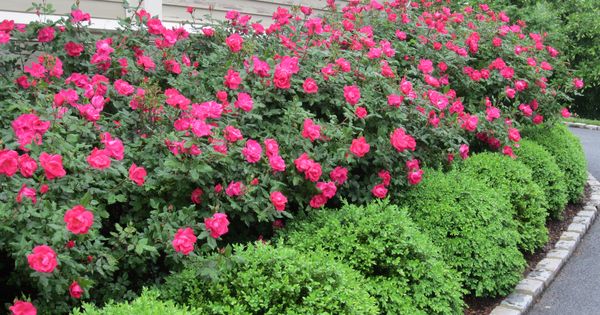
rose hedge
The girlish grapes look spectacular in the role of a fence. Its planting is especially attractive on autumn days, when the red crimson of the leaves creates an elegant landscape on the site.
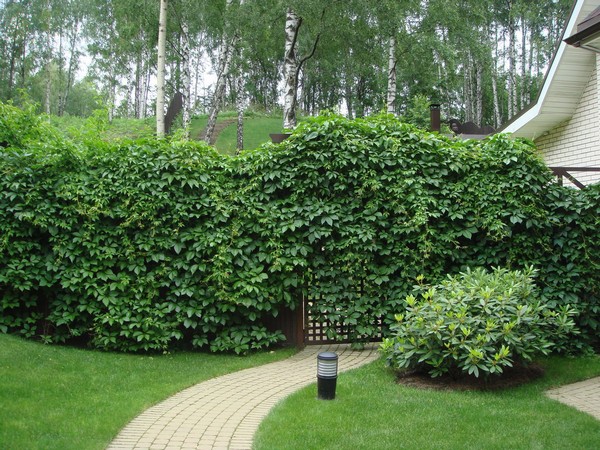
Parthenocissus hedge
Living fence: types and classification
The process of evolution of hedges from green spaces has been going on for centuries, as a result, today we have received a huge species heritage of similar garden design objects with a classification according to a variety of parameters. A hedge can vary in the following parameters:
- height;
- cutting intensity;
- landing row.
Dividing fences by height
In this category, you can grow three subspecies of living fences with your own hands:
1. Low.
2. Average.
3. High.
Low landings are characterized by a small height and are called curbs. Borders growing no higher than a meter are used to mark the boundaries of lawns, paths, flower beds.
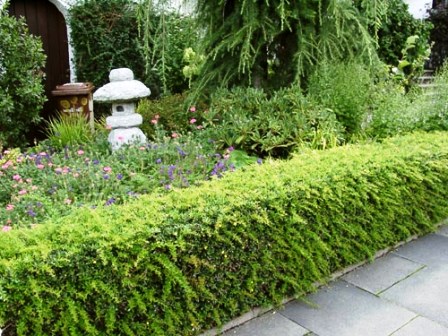
Low hedge
The next category includes a hedge of shrubs and stunted trees, growing 1-2 meters. The scope of their application is the zoning of the site according to functional features.
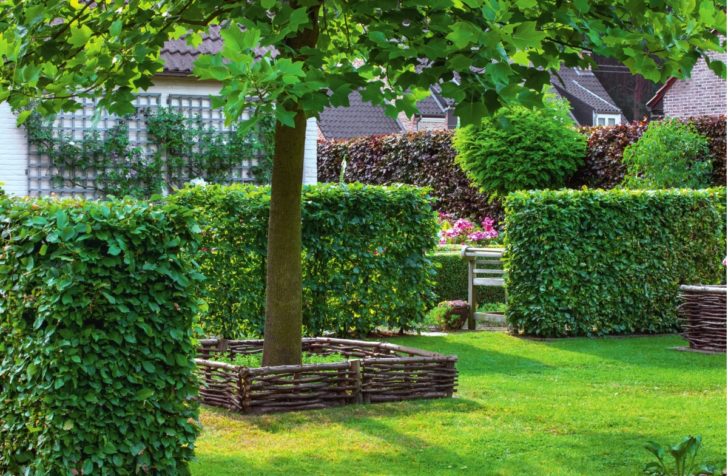
Zoning the site with a hedge
High hedges in the country can reach two meters in height and are usually located along the perimeter of the site.

High hedge around the perimeter of the site
The division of hedges according to the intensity of the haircut
By shearing, hedges are divided into free-growing and molded. The form of the former is practically not corrected. Plants develop in arbitrary directions. A do-it-yourself molded hedge is more difficult to create, since planting will need to support the clarity of the geometry of the forms, that is, regular care and shearing, and not all summer residents are ready for this.
Dividing hedges by planting row
According to the planting method, hedges can be:
1. Single row.
2. Multi-row.
3. Linear.
4. Chess.
5. Mixed.
The easiest way is to grow a single-row living fence with your own hands. Plants are planted here in one line in compliance with a given stepping distance.The value of the latter depends on the variety and type of planting material. For a hedge of shrubs, this figure is 30 - 50 cm, for trees it increases to 75 - 150 cm.
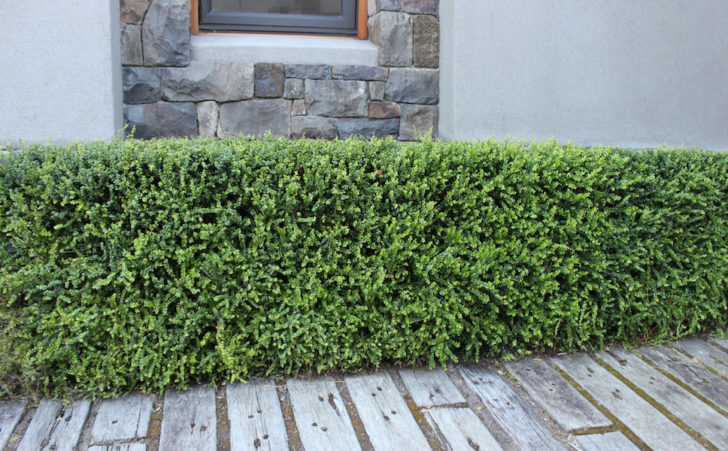
Classic single row hedge
Two-row and three-line hedges consist, respectively, of two and three rows of differently tiered planting. A multi-tiered living fence provides for a specific planting of plants: they are placed in a checkerboard pattern. The distance between individuals is determined by the estimated crown size and growth height.
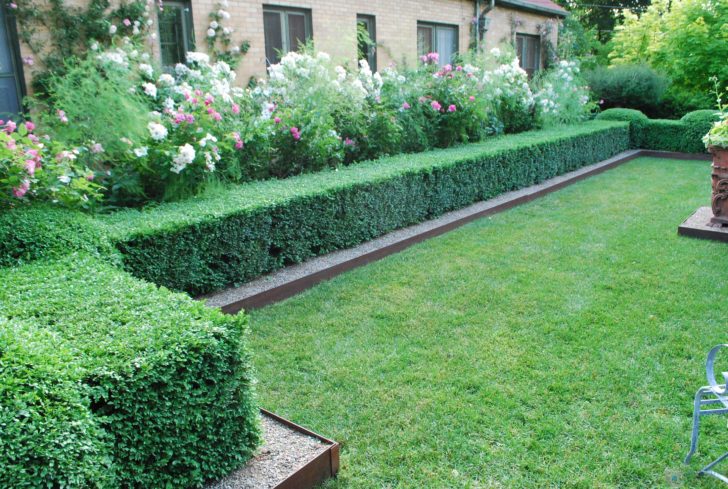
double row hedge
Cascading green fence in the country should be created with a bit of imagination. In it, molded "steps" can be interspersed with free-growing planting, as well as mixing various varieties of trees and types of shrubs.
An unshaped green fence made of barberry, honeysuckle, shadberry will look great. In plantings of a mixed type, it is good to use plants of the same subspecies, but of different cultivars. So you get a hedge in a variety of colors.
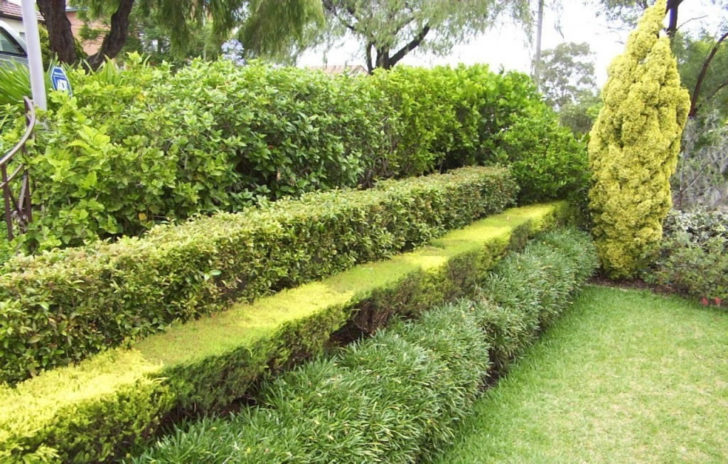
Cascading green fence
An excellent solution would be a multi-layer live fence in the country house from a mix of variegated privet, purple and green beeches, and holly. Of course, it will take up a lot of space, but it will perfectly hide the site from unwanted views and highway noise.
back to index ↑Plant selection
“It is very important that after shearing, the hedge recovers quickly and has a tendency to form shoots”
Having decided to grow a hedge with your own hands, select plants for planting that have already been tested in this capacity and feel good in the proposed climatic conditions. Take a closer look at winter-hardy, unpretentious species with dense foliage. It is very important that after shearing, the hedge quickly recovers and has a tendency to form shoots.
Of the trees, your attention should be attracted to:
- maple;
- turn
- hornbeam.

Hornbeam hedge
From bushy:
- hawthorn;
- privet;
- cotoneaster;
- jasmine.
Live fences made of rhododendron, lilac, sea buckthorn, wrinkled rose, shadberry, honeysuckle look aesthetically pleasing. Plants should have small foliage so that after trimming the hedge it is possible to get a flat surface.

Green hawthorn fence
How to plant a green fence
Selection of seedlings
Gathering planting material for a hedge in the country, evaluate the development of the crown and the condition of the root system. The first should be adequately branched, the second - not overdried.
Healthy plantings aged 3-5 years are suitable for planting, capable of transferring the transplant procedure without excesses and accepting new conditions of existence.
Location selection
Before forming a hedge, you need to get acquainted with the technological basics of the process. It must be borne in mind that the fence is, albeit soulless, but still a living creature and it will need proper lighting, additional nutrition, and regular watering. This suggests that, when planting a hedge with your own hands, you need to be puzzled by both the choice of location and the seasonality of work.
As a rule, bookmarking in open ground is carried out in the spring, after airing the soil. In autumn days, living fences are formed from winter-hardy plants.
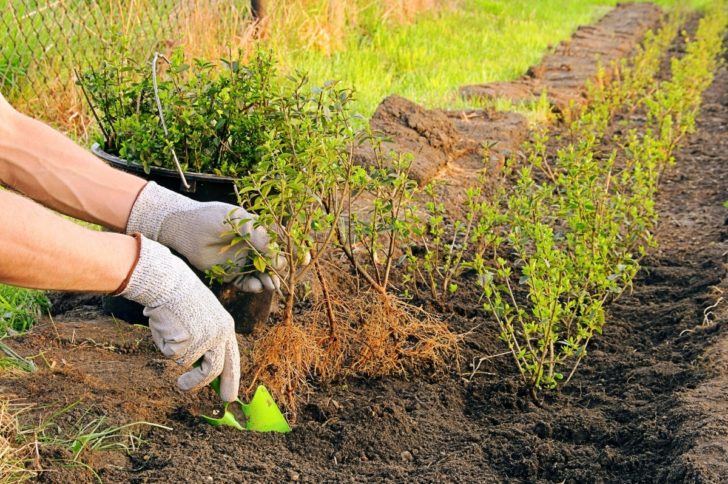
Hedges are planted in the spring
According to the rules, the green fence should be located at least two meters from buildings and no closer than half a meter from a stationary fence, if any. The planting line of the hedge in the country is marked with a cord stretched over pegs. A trench half a meter deep will be dug along it.

The landing line is marked with a cord stretched over pegs.
With regard to width, the issue is resolved sequentially. For a single-row green fence, 40 cm is enough. For multi-row plantings, each subsequent line is another + 50 cm wide.
Planting Density
This parameter is determined by the typical features of plants and whether the hedge will be cut and trimmed.

Stocking Density Table
In standard recommendations, up to 7 bushes of undersized shrubs can be planted per linear meter. 4-5 medium-sized, and no more than two tall species of bushes or trees.
Coniferous hedge
For planting conifers, you will need a pit with a volume twice the size of the roots. The earth extracted during digging is enriched with silica, compost and nutrient compounds. A small portion is returned to the bottom of the prepared pit.
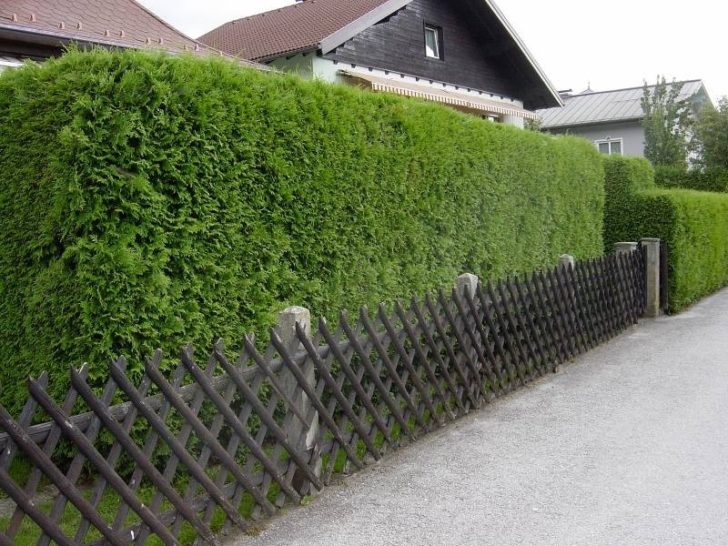
juniper hedge
If seedlings for a living fence were purchased in containers, then when transplanting, their roots are not freed from an earthy coma. The process takes place by the transshipment method.
After installing the trunk in the landing pit, the remaining earth mixture is poured into it. The soil is lightly compacted, without tamping. An irrigation ridge is formed along the planting line of the green fence. It looks like a small mound. An irrigation comb is necessary to prevent the spreading of irrigation water.
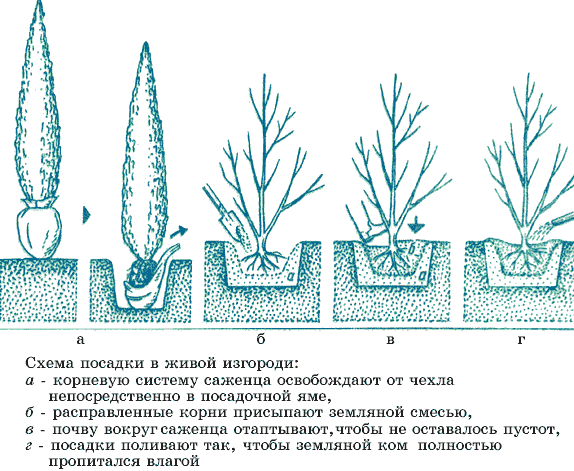
hedge planting sequence
After the planting procedure is completed, all plants are watered abundantly.
Planting deciduous hedges
Deciduous seedlings on sale are found mainly with an open rhizome, so you will have to work on it. Before planting a deciduous hedge in the country, its constituent elements are soaked with roots in water and left for several hours. Then the root processes are washed, inspected, freed from damaged areas and shortened too long shoots.
Then they proceed in the same way as when planting conifers. Cesspool soil is mixed with organic additives and compost. Part of the mixture is sprinkled on the bottom. The seedling is sent to the pit and covered with the remaining soil. When backfilling, you should monitor the density of laying the soil. There should be no voids between the roots.
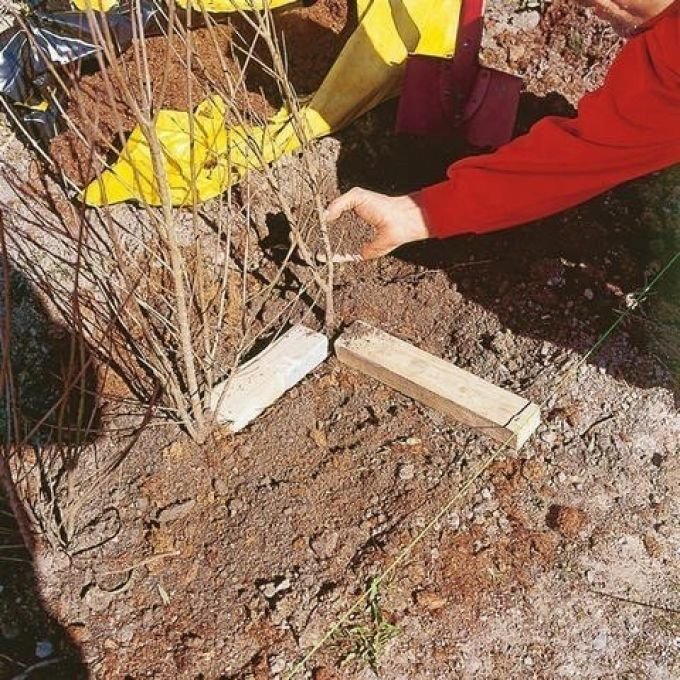
After planting, the bushes are fixed
When planting a living fence with your own hands from tall tree seedlings, their trunks must be immediately fixed to the stakes driven in next to them. This will allow the plants to take root safely and not break under gusts of wind.
Planting shrubs
Hedge bush seedlings can be offered both planted in containers and with an open root system. The first option is more acceptable, as it allows, thanks to the protection of the roots, not to rush to plant material in open ground.
A hole for transplanting a bush should be dug, taking into account the volume of not only the roots, but also the earthen clod held by them.

Planting shrubs in holes
When creating a green fence, bushes are transplanted according to coniferous technology, that is, by the method of transshipment. The resulting voids fall asleep, with a slight compaction of the soil, and watered.
Large bushes as a hedge in the country are planted in a trench. Its bottom should be loosened with a fork of 20 centimeters, and add peat, manure or leaf humus there. You can add wood ash, lime and phosphates.
trellis fence
This is a kind of economy version of a living fence, which allows you to economically use the space of a small garden plot. For its creation, plants are used that respond well to cutting and trimming a green fence. To form a trellis fence, you will need to densely plant the area with seedlings of the appropriate varieties. In this case, the step distance is maintained within 20 cm. The greatest aesthetics of the composition are given by seedlings of yellow acacia, mountain ash, willow, hawthorn.
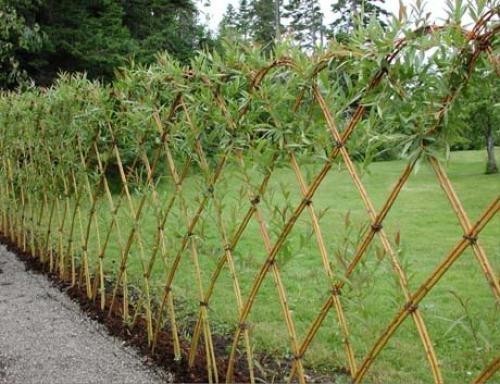
Hawthorn trellis fence
After a year, a radical pruning of the hedge is carried out, as they say, “under the stump”. Up to 15 cm of shoots are left above the ground. The next spring, the procedure is repeated, but with the preservation of the most developed processes. They are intertwined, trying to create a diamond pattern.
In places where the branches of the hedge come into contact, the bark is cut off from the shoots. This is necessary for the fusion of the processes. The finished pattern is fixed to a lattice-type frame. The latter can be made from stakes and cross rails.
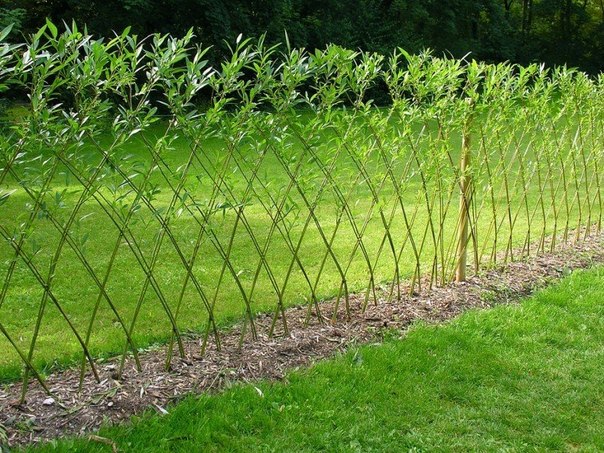
Formation of a trellis fence
In the future, when caring for a hedge in the country, the trellises will simply be cut up to 2-3 times a season, for alignment along a vertical plane. Side cutting of a trellis-type green fence is carried out in order to maintain the uniformity of its width.
back to index ↑Trimming and trimming hedges
“The hedge will have to be adequately looked after: timely water, feed, cut”
When planning a green fence in a summer cottage, one must be aware that it will require special attention, different from caring for other plantings. The hedge will have to be adequately looked after: timely water, feed, cut. By running a green fence, you will make your site unsightly. To restore the former aesthetics, you will have to cut off the landing at the root and form a new one.
Landing actions
Planting bushes and deciduous trees should be heavily pruned almost immediately after planting in the ground. They leave the aerial part up to 15 cm. This stimulates the growth of shoots from the base.
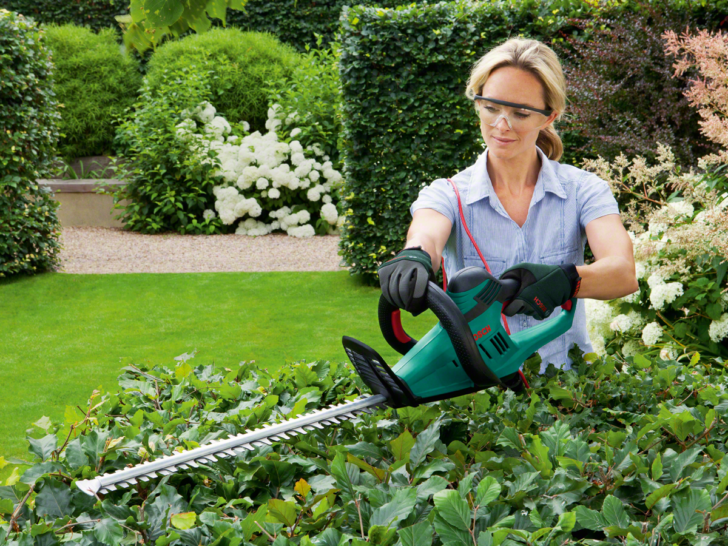
After planting in the ground, pruning is carried out
If the seedlings planted in the green hedge had open roots, then their aerial part is shortened by exactly half. Container samples are trimmed by a third.
Work in the second season
After a year, hedge trimming will be carried out up to 4 times a season. As for pruning, it is minimal and is carried out solely for the purpose of giving the planting the required shape due to an increase in branching density.
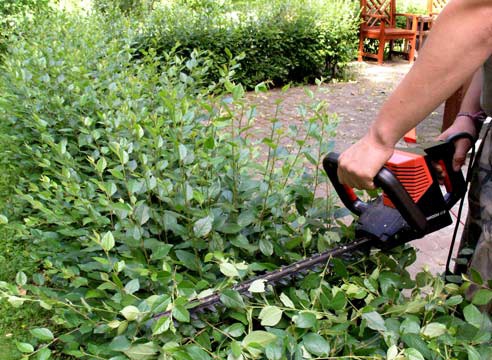
Pruning should be done 4 times a season
Deep pruning will only need plant species such as: blackthorn, privet, tamaris and hawthorn. The height of new shoots is cut off by a third at the kivilnik, barberry, hornbeam, boxwood, laurel cherry, cypress. This is necessary to improve the living fence in the country.
Haircut later
After a couple of years, clipping the hedge will turn into a purely cosmetic procedure, the purpose of which will be to keep the fence in a neat form. Basically, lateral branching will be subject to correction, and the upper shoots are advised to only trim a little.
Green fence mowing is carried out in early spring, until leaf cover appears. Conifers can be processed later. When caring for a living fence in a country house with your own hands, you should know that when ennobling it, the base should remain wider than the upper part. This will ensure sufficient illumination of the lower tiers, which will allow the plants to develop properly.
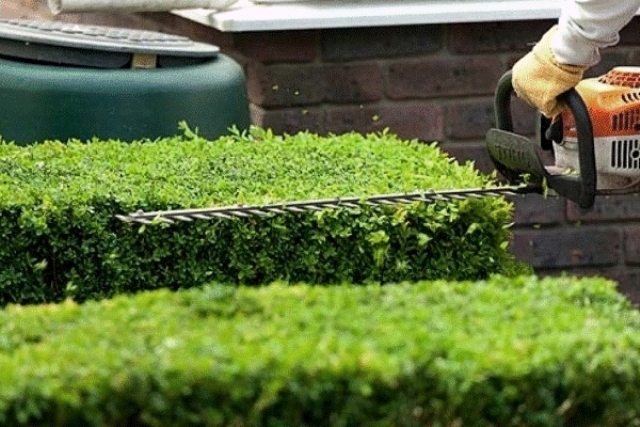
The hedge is trimmed in the spring
For work on trimming hedges from small-leaved plants, an electric drive tool is required. Large-leaved plantings are processed with secateurs.
The subtleties of pruning free-growth hedges
The fact that free-growing hedges are not cut is not entirely true. They also form crowns and heal.
The maximum pruning of this type of green fence is done one year after planting. Then, as needed, the fence is adjusted by:
1. Shaping haircuts. They are needed to create crown saturation density with both main (skeletal) and additional (fouling) branches. Work is carried out in February - March.
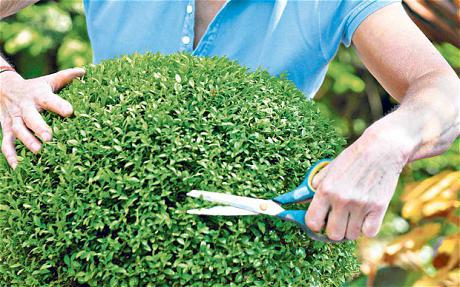
Shaping haircut
2. Supportive haircuts. They regulate the shape of the crowns of the hedge, providing optimal illumination to all its sections.

Support haircut
3. Anti-aging haircuts. A procedure that stimulates the growth of new shoots in plants "with experience".
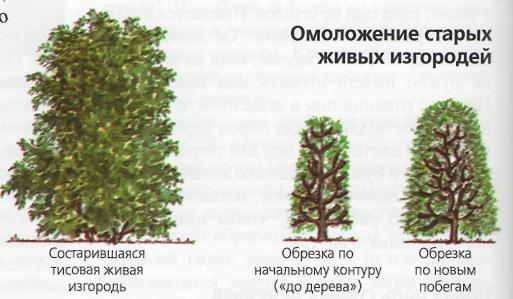
Rejuvenating hedge clipper
4. Recovery haircuts. Peculiar resuscitation measures aimed at reviving flowering and fruiting in affected or recovered plants.
Restoring and rejuvenating pruning of a living fence in a country house can be performed until mid-April or postponed to August-September.
There is also the so-called sanitary hedge trimming. In its course, faded inflorescences, dead and damaged shoots, and improperly growing branches are removed. The procedure is relevant at any time, except for the winter months and the period of movement of juices.
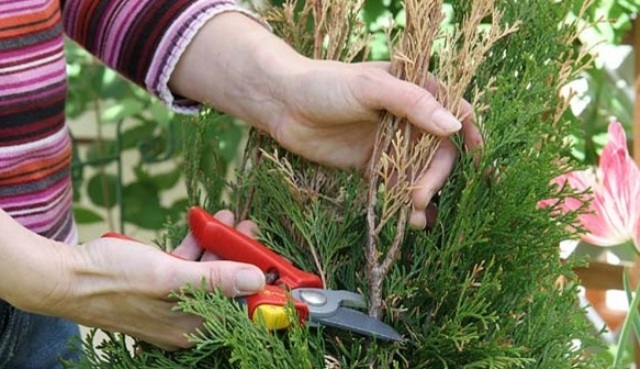
Sanitary hedge trimming
Sanitary cutting is very important for flowering hedges. Eliminating dead wood, weak and thickening shoots will only add to their attractiveness.
The main mistakes when cutting hedges
A common hedge trimming mistake is shallow cutting depth. If you spare the plant and cut off only the tips of the shoots, then over time the green fence will loosen, sag and lose its decorative effect.
To avoid such problems, cut the planting radically. Try to bring the shape of the hedge closer to last year's. Dig in from the sides. In profile, the hedge should look taller, not wider.
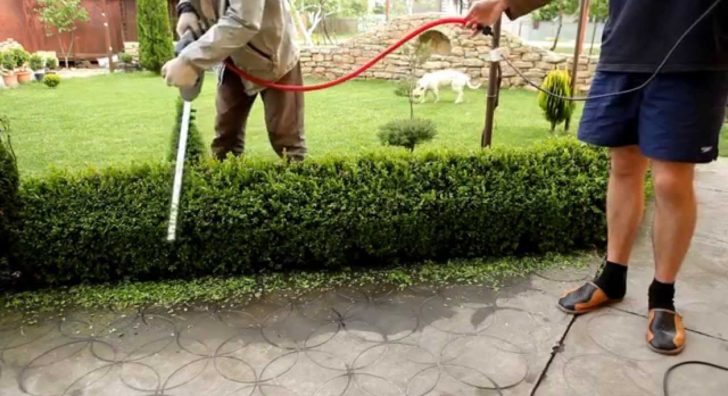
Don't be afraid to drastically cut your hedge
If you bring the shape of the plant closer to the cube, then with improper thinning it is easy to get ugly bare lower branches. Violation of the lighting of the lower tiers will give rise to the appearance of dry branches. If you get a similar effect when caring for a living fence with your own hands, immediately work on a neglected fence, cutting it to at least half the height and removing the width by the same amount.
It is possible, for rescue purposes, to cut off the landing on the stump, trying to stimulate it to launch new shoots.
Some tips for anti-aging pruning
Rejuvenation is applicable not only to aged or neglected hedges. The procedure is also resorted to during the loss of decorative properties by living fences.
Rejuvenation is preferably carried out in two steps. In the first year, it is recommended to cut one side of the green fence, shortening the branches by 10 centimeters, and in the second year, carry out the same activities on the other side. If the case is not egregious, then do-it-yourself hedge correction is carried out in full in one approach.
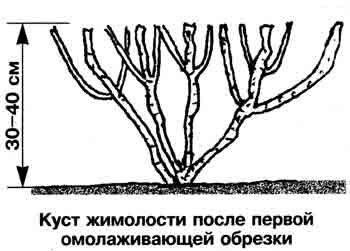
An example of anti-aging pruning
How to make a cut
The cut should be made oblique. It is performed on a properly developed and perfectly healthy kidney, looking at the periphery of the bush. This moment is important for maintaining the shape of the green fence.
After cutting, the hedges in the country house are left to recover, having previously fed, watered abundantly and mulched the soil under them. For mulching, peat, wood chips, bark, or just mowed grass is suitable.
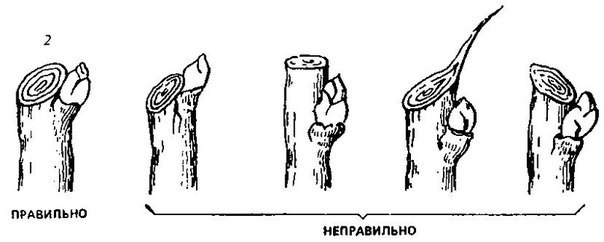
Correct cut pattern
For the convenience of trimming hedges, use stretched cords or a wire frame that has a bright color. The height of the haircut should be increased by several centimeters annually until the optimum level is reached.
Green barbershop tools
You can cut a hedge with your own hands with electrical appliances or hand tools. The first category includes: brush cutter, chainsaw, electric shears. The second includes garden shears and a regular pruner. The latter spoil the foliage less and allow you to draw the contours of the hedges with greater care.
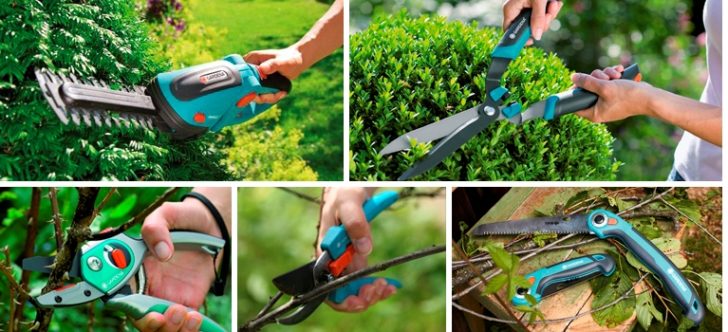
Green hedge trimmer
How to cut a coniferous fence
The period of pruning a living fence from conifers falls on April-May. Under certain conditions, it can be postponed until the fall. Best of all, do-it-yourself haircuts lend themselves to cypress, yew and thuja. When pruning, one third of the summer growth is removed.
The most difficult thing is to form green fences from fir trees. Shearing and pruning of such plantings should be done with enviable constancy, otherwise there is a great risk of launching a hedge, and it will quickly transform into a dense forest.
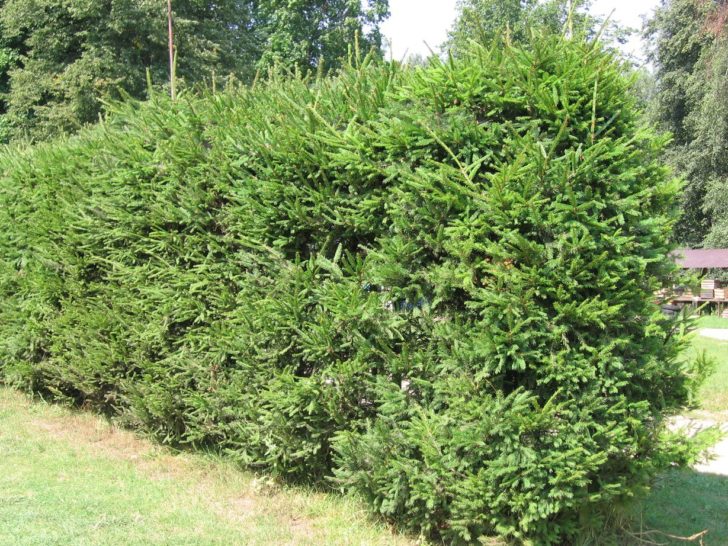
Hedges need to be trimmed regularly
In pines, only the apical shoots are shortened. The procedure is performed in May or even in June. It is during this period that pines have an active growth of shoots.
When pruning a hedge of pines, it should be borne in mind that the plant has dormant buds on its aged branches, which will not wake up after pruning. This involves making an annular cut.
The shaping of the pine crown is not done with scissors - it is done by hand. As soon as the needles are divided on the young shoots, they are simply unscrewed by holding them with the thumb and forefinger. This technique can stimulate the awakening of new buds and the branches of the hedge will become thick and fluffy.
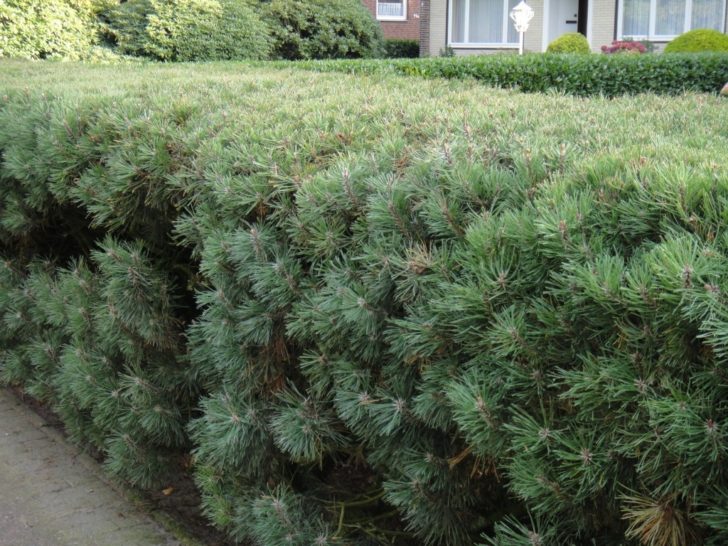
Pine hedge
Young needles must be removed when it is necessary to stop the growth of a young shoot.
Plucking can be carried out in conifers of any kind. This is done once, usually in early spring. This restriction does not apply only to juniper green fences in the country, since such an action should be carried out with them constantly.
Growing coniferous living fences with your own hands without molding will require special care in winter. Their round, pyramidal, columnar crowns are tied with hemp for the period of snowfalls. This will save them from breaking off branches and losing their shape, which, by the way, can be facilitated not only by heavy snow covering the paws, but also by excessive dampness.
If a couple of branches nevertheless break under the snow cap, they will have to be removed by proper pruning.
back to index ↑A few tips for beginner gardeners
A living fence of complex shape should be cut with your own hands according to a template. It is assembled from thick cardboard, cutting out openings of a given shape.
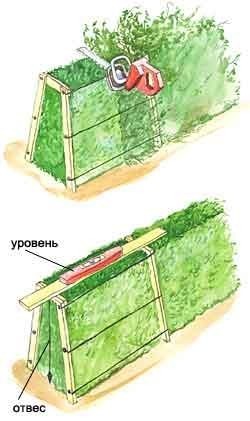
Trimming a hedge according to a template
If there are bird nests in the hedge at the dacha, the haircut will have to be postponed until the chicks fly out of them.
Green coniferous fences are not cut off after the end of August. This is due to the problem with the stiffness of the shoots. They may not have time to take the desired form before the onset of cold weather and eventually freeze.
Regularly sheared living fences are systematically fertilized. It is advisable to give them multi-component formulations for feeding.
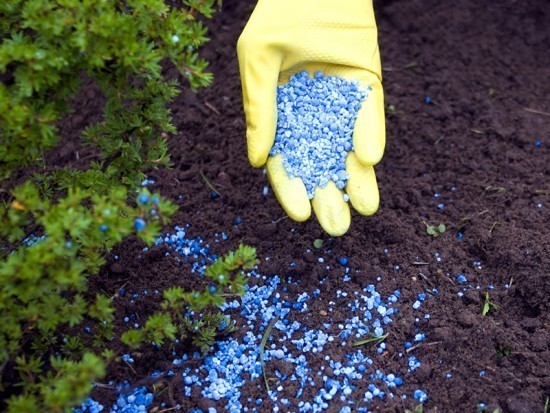
The hedge needs regular feeding
When purchasing hedge trimmers, make sure that their blades are not too massive. Do not forget that the tool should fit comfortably in your hand, then the work will not be so tedious.
After cutting, the scissors are wiped off the remnants of the juice with a rag moistened with oil and preserved.
back to index ↑Watering and fertilizing hedges
Proper watering and fertilizing is the key to the beauty of a green fence in the country. In order for nutrition and moisture to reach the roots, they are applied to loosened soil. During irrigation, the water jet should be directed towards the base of the plants. A sufficient depth of wetting can be considered the penetration of water by 40 cm into the soil.
The nuances of watering coniferous plantings
Coniferous hedges are subject to active watering only during the growing season. At the onset of autumn, the amount of moisture intake is sharply corrupted. This is one of the ways to stop the growth of new shoots and allow the existing ones to get stronger and stiffen.
Conifers should be watered slowly, saturating the soil for several hours.
Spruces, thujas, cypress trees on dry days should be added to crown spraying. A similar procedure is performed in the morning, before the start of the sun. Irrigation activities are not carried out at night, due to the possibility of damage to the live fence by fungi.
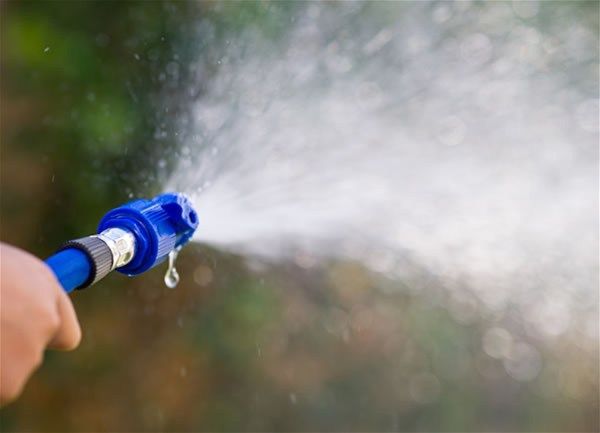
Spruce, arborvitae, cypress trees must be sprayed
Drought is best tolerated by juniper and pine green fences in the country, so if there are certain problems with watering, then think about hedges from these plants.
Top dressing is carried out with organic matter and minerals. The first category includes:
- leafy humus;
- compost;
- peat.
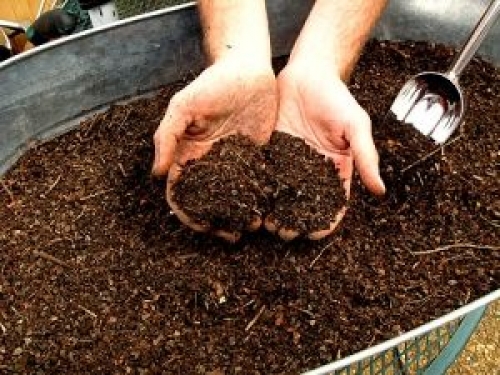
organic fertilizer for hedges
Their dosage per square of hedge planting is 2-5 kilograms. Mineral fertilizers include:
- phosphorus mixtures;
- phosphate-potassium compounds;
- nitrogen species.
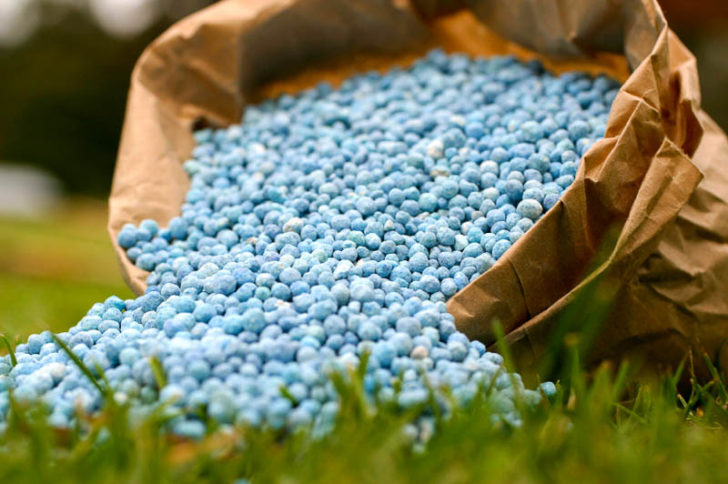
Mineral fertilizers for green hedges
The last two types of fertilizers are seasonal. They are introduced either in the spring or at the end of the season.
back to index ↑Conclusion
If you decide to grow a hedge with your own hands, then put a little soul into this process and the result will not be long in coming. Remember that such a delight will remain on your site for many years, so do not forget to take care of it, and your dacha, framed by this truly luxurious landscape decoration, will always be presented in a decent way.
Photo gallery - hedge
Video
